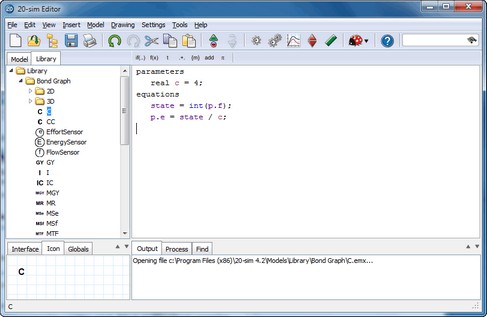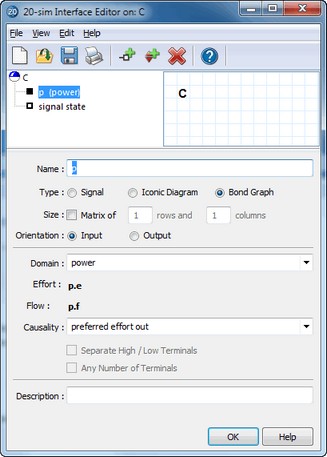A port is a location where an element can exchange information (in case of a signal port) or power (in case of a power port) with its environment. So, it is the model port that defines the connection with the element. A port is an important concept, as it allows you to describe the properties of the bonds that can be connected to the element, i.e., its direction, size, domain, etc. Ports can be defined in 20-sim using the Interface Editor.

All ports of a submodel are shown in the Interface tab. In the figure below a standard C-element is shown with one power port p. Each bond graph port has an effort and a flow variable. In 20-sim these variables are be denoted with the extensions .e and .f and are also known as power-port variables. You can see an example in the figure below where equations are defined using the variables p.e and p.f.

Ports can be added and defined in the 20-sim Interface Editor. The Interface Editor of the C-element is shown below.

Bond graph ports have several properties:
| • | Name: The name of the port. |
| • | Type: Next to bond graph ports, 20-sim also knows iconic diagram ports and signal ports |
| • | Orientation: The orientation of a connected bond (indicated by the half arrow). |
| • | fixed in orientation: The bond will point towards the element. |
| • | fixed out orientation: The bond will point from the element to another element. |
| • | Rows/Columns: The standard size of a port and corresponding bond is 1 but you can also define ports with larger sizes. |
| • | Domain: The domain of the port. |
| • | Causality: The preferred causality of the port variable (effort and flow). You have to defined here what should be the input variable (effort or flow) and what should be the output variable (effort or flow). |



